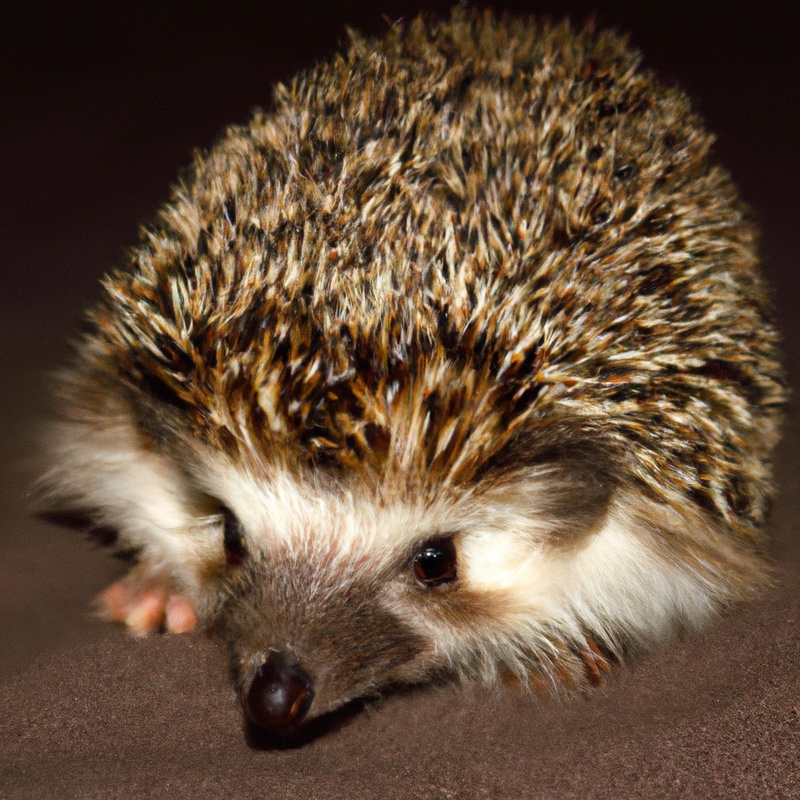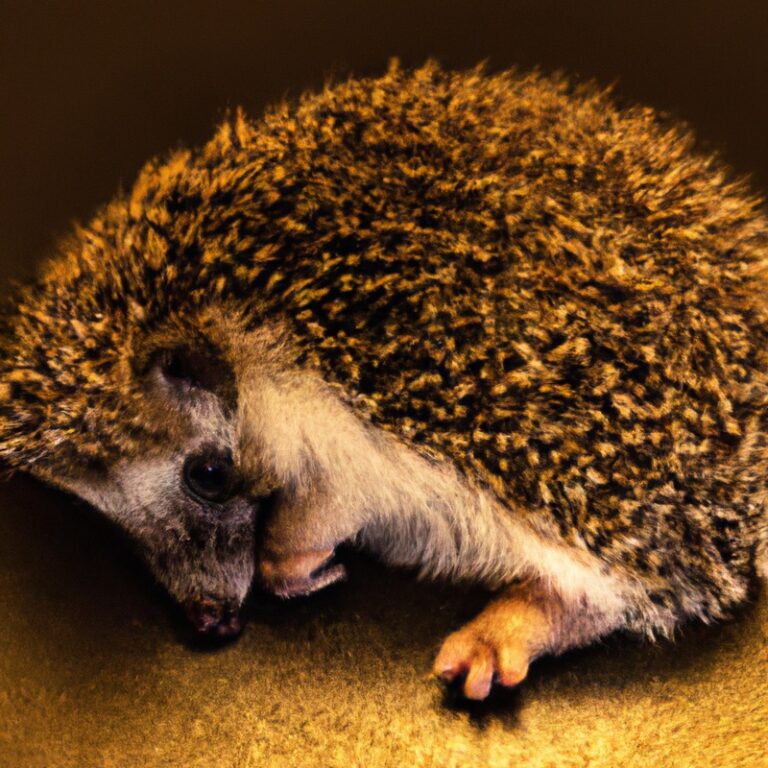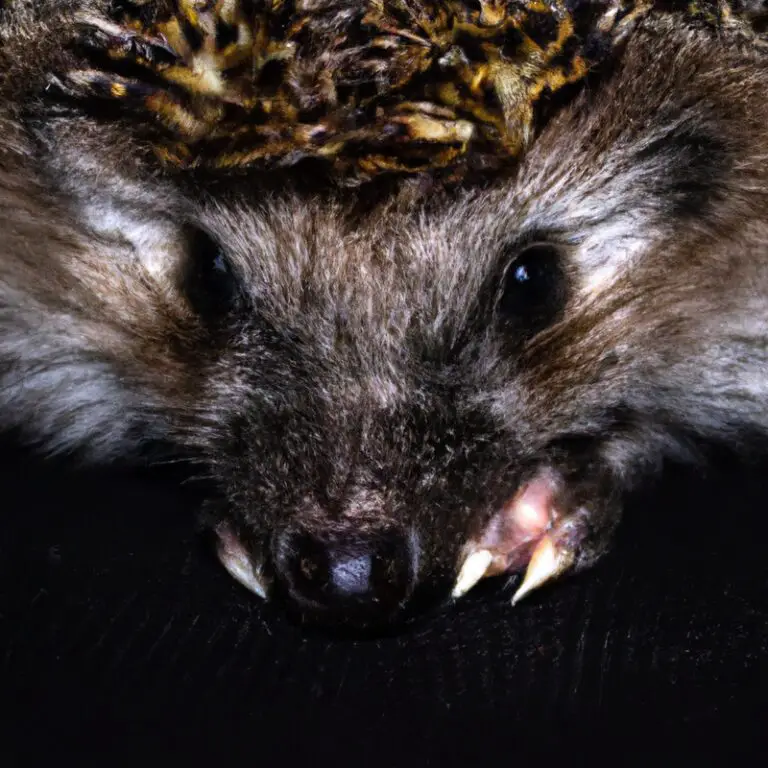How Do Hedgehogs Find Sources Of Water In Urban Settings?
Key Takeaways:
- Hedgehogs have a remarkable ability to locate sources of water such as puddles, garden ponds, and bird baths in urban areas.
- Their keen sense of smell allows them to detect moisture, helping them find water even during dry periods.
- Providing water sources like shallow dishes or bowls in your garden can help hedgehogs stay hydrated and thrive in urban environments.
- Creating a hedgehog-friendly garden with access to water and shelter can contribute to the conservation of these adorable creatures.
Ever wondered how hedgehogs manage to find water in the concrete jungles of urban settings?
These adorable creatures may not have the luxury of natural water sources like ponds and streams nearby, but they’ve got some tricks up their spiky sleeves.
In this article, we’ll explore how hedgehogs quench their thirst by discovering natural sources like rainwater and springs, as well as artificial options like bird baths and water dishes.
We’ll even dive into some creative ideas to ensure they stay hydrated in your very own garden.
So, let’s get ready to uncover the secret world of hedgehog hydration!
| Methods | Description |
|---|---|
| Smell | Hedgehogs have a keen sense of smell and can detect sources of water through their noses. |
| Hearing | Hedgehogs can hear the sound of dripping water or running fountains, which helps them locate water sources. |
| Sight | Hedgehogs may see reflections or movement in puddles, which can guide them to water. |
| Taste | They may also use their tongues to test damp surfaces for water availability. |
| Instinct | Hedgehogs have an innate ability to search for water sources that is developed through evolution. |
Natural sources of water for hedgehogs in urban settings
Hedgehogs in urban settings can find water from natural sources such as ponds, lakes, streams, rivers, natural springs, and even rainwater.
Ponds and lakes
Ponds and lakes are important natural sources of water for hedgehogs in urban settings. These bodies of water provide a reliable and accessible supply of hydration for hedgehogs.
Ponds and lakes offer hedgehogs a safe place to drink and even bathe, which is essential for their well-being.
Hedgehogs have a keen sense of smell and can detect the presence of water from a distance. It is important to ensure that these water sources are clean and free from any harmful substances to support the overall health of hedgehogs.

Streams and rivers
Streams and rivers are natural sources of water that hedgehogs can rely on in urban settings. These flowing bodies of water can be found in parks, green spaces, or even city outskirts.
Hedgehogs are adept swimmers and can navigate these water sources to quench their thirst or take a bath.
However, it’s important to ensure that these water bodies are clean and free from pollutants or harmful substances that could harm the hedgehogs. Additionally, creating alternative water sources like shallow bowls or dishes can supplement the availability of water for hedgehogs in urban areas.
Natural springs
Hedgehogs have an amazing ability to find natural springs for a water source in urban settings.
They rely on their keen sense of smell to detect the scent of water underground.
They will follow the scent trail to locate the spring and quench their thirst.
Natural springs are a vital resource for hedgehogs, providing clean and fresh water that they need to stay hydrated.
So, if you come across a hedgehog in your garden or neighborhood, chances are they have discovered a natural spring nearby!

Rainwater
Rainwater can be an important natural source of water for hedgehogs in urban settings. During rain showers, hedgehogs can access water by drinking droplets that collect on leaves, grass, or other vegetation.
Puddles and small pools that form after rainfall also provide them with an opportunity to drink and rehydrate.
As hedgehogs are nocturnal animals, rainwater can be especially helpful for them during dry periods when other water sources might be scarce. It’s important to ensure that gardens and green spaces in urban areas have vegetation and natural spaces that can collect rainwater for hedgehogs to access.
Artificial sources of water for hedgehogs in urban settings
Hedgehogs in urban settings can find artificial sources of water through bird baths, garden ponds and water features, water dishes or bowls, and even watering cans and flower pots.
Bird baths
Bird baths can be a valuable source of water for hedgehogs in urban settings.
These shallow, open containers with water provide a convenient and accessible option for hedgehogs to drink and bathe.
When setting up a bird bath for hedgehogs, remember to place it in a quiet and secluded spot to avoid scaring them away.
Additionally, regularly clean and refill the bird bath to ensure it’s hygienic and always filled with fresh water.
A bird bath can be a simple yet effective way to help hedgehogs find water in urban environments.
Garden ponds and water features
Garden ponds and water features can serve as valuable sources of water for hedgehogs in urban settings. These water sources not only provide hedgehogs with hydration but also support their natural behaviors, such as bathing and drinking.
When designing your garden, consider incorporating a shallow area in your pond or installing a small water feature like a fountain or birdbath.
Make sure to provide easy access for hedgehogs to enter and exit the water, such as by adding a gently sloping ramp or stones. Regularly check and clean these water sources to ensure they remain safe and accessible for hedgehogs.
Water dishes or bowls
Water dishes or bowls are essential for providing hedgehogs with a reliable source of water in urban settings.
These should be placed in a quiet and secluded area that is easily accessible for hedgehogs.
Use shallow dishes or bowls to prevent them from falling in or getting trapped.
Ensure the water is changed regularly to maintain cleanliness and prevent the growth of bacteria.
It’s important to also monitor the water level, especially during hot weather, as hedgehogs may drink large amounts.
Watering cans and flower pots
Watering cans and flower pots can be effective artificial sources of water for hedgehogs in urban settings. A shallow watering can filled with fresh water provides a convenient drinking spot for hedgehogs.
Flower pots can also be used by placing a saucer filled with water nearby.
Remember to regularly clean and refill the water to ensure it stays safe and hygienic for the hedgehogs. By creating these accessible water sources, you can help support the well-being of hedgehogs in your neighborhood.
Creative ways to provide water for hedgehogs in urban settings
One way to provide water for hedgehogs in urban settings is by setting up hedgehog drinking stations. Another creative approach is creating wet areas in your garden or using mulching to retain moisture.
Hedgehog drinking stations
Hedgehog drinking stations are a great way to provide water for these adorable creatures in urban settings.
They can be simple and easy to set up.
- A shallow bowl of water placed in a quiet area of your garden can work wonders. Just make sure to keep it filled with fresh water.
- You can also try using a pet water dispenser with a small dish attachment. This will ensure a constant supply of water.
- Another option is to create a hedgehog-friendly pond with a gently sloping edge for easy access. This will not only provide water but also a place for them to bathe and cool off.
Remember, it’s important to check and refill the water stations regularly to keep them clean and hygienic for our hedgehog friends.
Wet areas in the garden
Wet areas in the garden can be beneficial for wildlife, including hedgehogs.
These areas provide a source of water for hedgehogs to drink and bathe in.
To create wet areas in your garden, you can install a shallow dish or basin filled with fresh water.
Alternatively, you can create a small pond or add a water feature that will attract hedgehogs.
Just make sure to check and change the water regularly to keep it clean and prevent the spread of diseases.
Providing wet areas in your garden can help hedgehogs thrive in urban settings.
Mulching to retain moisture
Mulching is an effective way to retain moisture in your garden and ensure that your plants have a consistent water source.
By spreading a layer of organic mulch, such as wood chips or compost, around the base of your plants, you can prevent water evaporation, suppress weed growth, and regulate soil temperature.
This will help to keep the soil consistently moist, reducing the need for frequent watering and conserving water in urban settings.
Remember to choose the right type of mulch for your plants and regularly replenish it to maintain its effectiveness.
Importance of providing water for hedgehogs
Water is essential for hedgehogs as it helps them stay hydrated and maintain their health.
Providing water in your garden can also attract hedgehogs and encourage them to visit more frequently.
Hydration
Hydration is essential for hedgehogs’ health and well-being. They mainly get water from the food they eat, such as insects and plants.
However, in urban settings, it can be challenging for hedgehogs to find enough water sources.
To ensure their hydration, you can help by providing a shallow dish of fresh water in your garden. Make sure to place it in a quiet and safe spot.
Remember to regularly change and clean the water to keep it hygienic for the hedgehogs.
Bathing and grooming
Bathing and grooming play an important role in the health and well-being of hedgehogs. Hedgehogs groom themselves to keep their fur clean and free from parasites.
However, they may require help if they become too dirty or infested.
When bathing a hedgehog, it’s essential to use lukewarm water and a mild shampoo specifically designed for small animals. Gently lather and rinse, taking care not to get water in their ears and eyes.
After bathing, ensure they are thoroughly dry to prevent them from getting cold.
Regular grooming helps to keep their fur healthy and prevents matting.
Attracting hedgehogs to your garden
Attracting hedgehogs to your garden can be done by providing a few simple things.
First, create a safe space for them by leaving areas of your garden wild and undisturbed.
Secondly, provide a water source, such as a shallow dish, to keep them hydrated.
Thirdly, attract insects – their main diet – by planting native flowers and avoiding pesticide use.
Finally, consider providing a hedgehog house or shelter for them to nest and rest.
Frequently Asked Questions (FAQs)
Can hedgehogs drink from a regular water bowl?
Yes, hedgehogs can drink from a regular water bowl. They need a constant supply of fresh water to stay hydrated, just like any other animal.
Ensure that the water bowl is shallow enough for them to reach comfortably, as hedgehogs have short little legs.
Place it in an easily accessible location within their habitat. Make sure to clean and refill the bowl regularly to maintain cleanliness and freshness.
How often should I replenish the water for hedgehogs?
You should replenish the water for hedgehogs daily or at least every other day. Hedgehogs need access to fresh water to stay hydrated, especially during hot weather or dry periods.
Make sure to provide a shallow dish of water that they can easily reach and clean it regularly to prevent contamination.
Remember, a reliable source of water is essential for the well-being of hedgehogs in urban settings.
Can hedgehogs swim?
Yes, hedgehogs can swim! Despite their cute and prickly appearance, hedgehogs are actually quite capable swimmers. Their bodies are well-suited for swimming, with their paddle-shaped feet and buoyant spines helping them stay afloat in water.
Hedgehogs naturally know how to handle themselves in water and can navigate through it with ease.
So if you ever come across a hedgehog taking a dip, don’t worry, they’re just enjoying a swim!
Do hedgehogs need a lot of water?
Hedgehogs do need water to stay hydrated, but they don’t require a lot of it. They can get most of their water from the food they eat, like insects and fruits.
However, having a small source of water, such as a shallow dish, is beneficial for them, especially during dry periods.
It’s important to make sure the water is easily accessible and changed regularly to keep it clean. Providing fresh water can help hedgehogs stay healthy and hydrated.
Can hedgehogs survive without access to water in urban settings?
Hedgehogs are remarkable animals with unique adaptations that allow them to survive in various environments, including urban settings. While they can go without direct access to water for short periods, they still need a water source to thrive.
Hedgehogs obtain moisture through their diet of insects, fruits, and vegetation.
However, in urban settings where natural water sources may be limited, it’s important to provide supplemental water for hedgehogs to ensure their well-being. Placing shallow dishes of fresh water in safe locations can help hedgehogs stay hydrated and increase their chances of survival.
Final Verdict
Hedgehogs can find sources of water in urban settings through both natural and artificial means.
Natural sources include ponds, streams, rivers, natural springs, and rainwater.
Artificial sources include bird baths, garden ponds, water dishes or bowls, and watering cans or flower pots.
Additionally, creative ways to provide water for hedgehogs include hedgehog drinking stations, wet areas in the garden, and mulching to retain moisture.
It is important to provide water for hedgehogs as it helps with hydration, bathing and grooming, and attracts hedgehogs to your garden.
Providing access to water is crucial for hedgehogs’ survival and well-being in urban environments.







